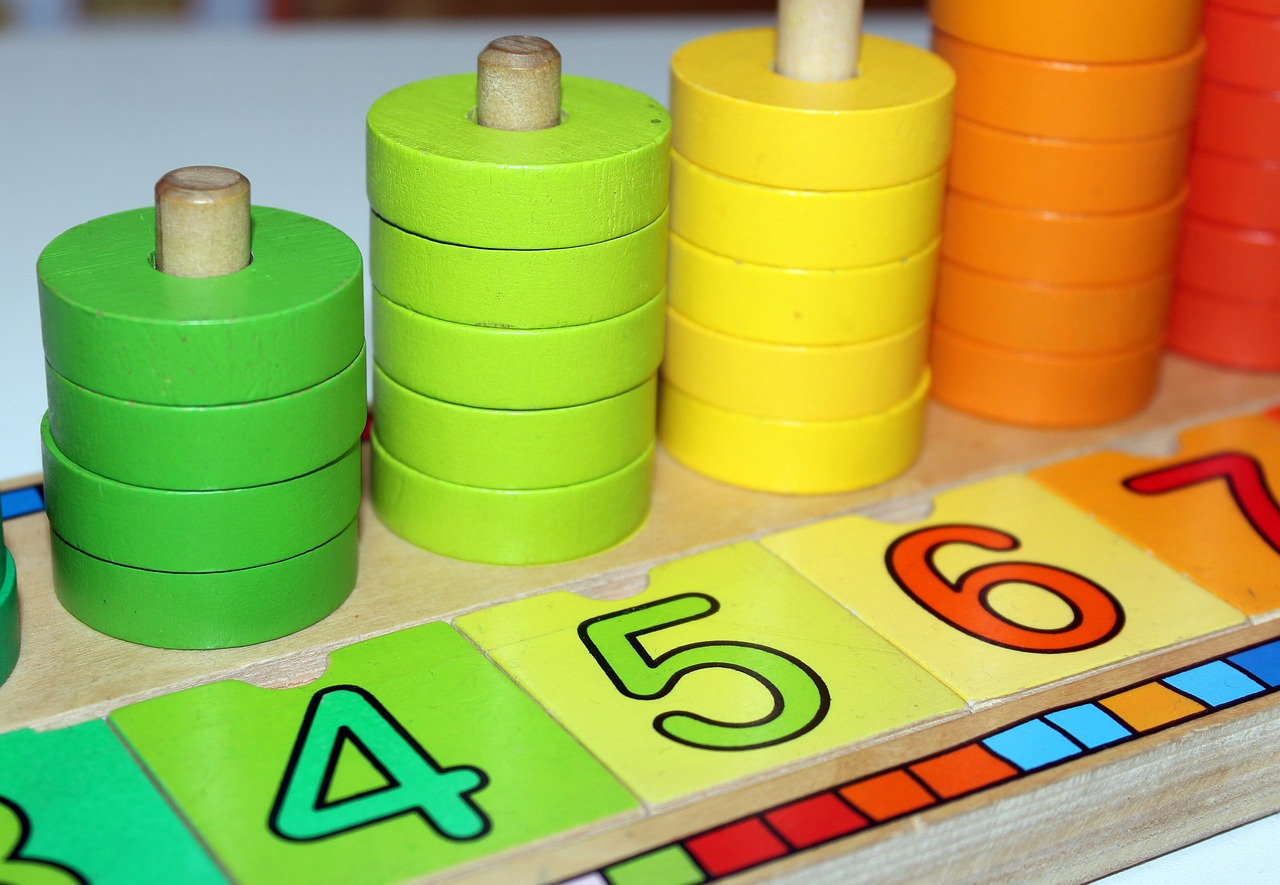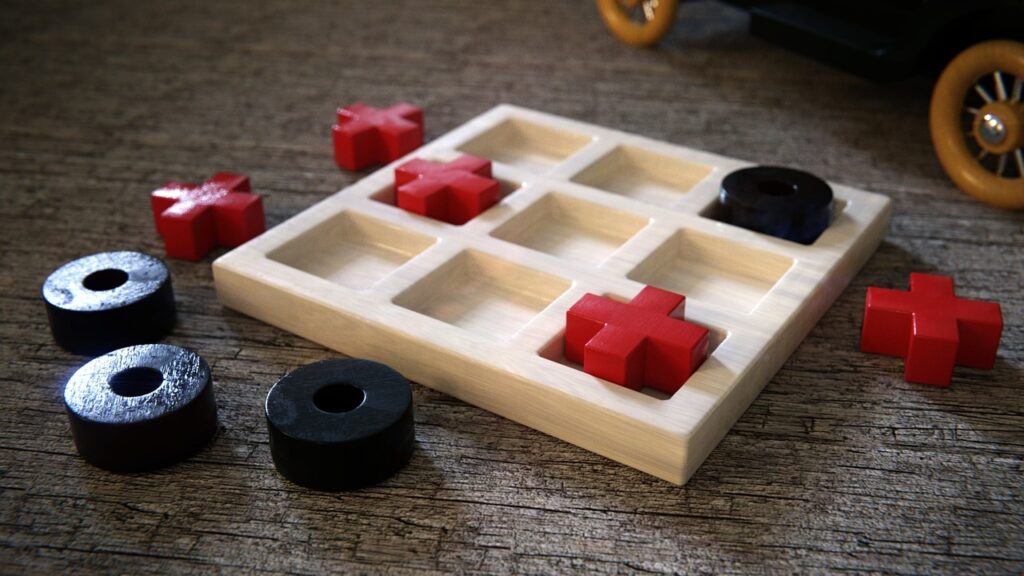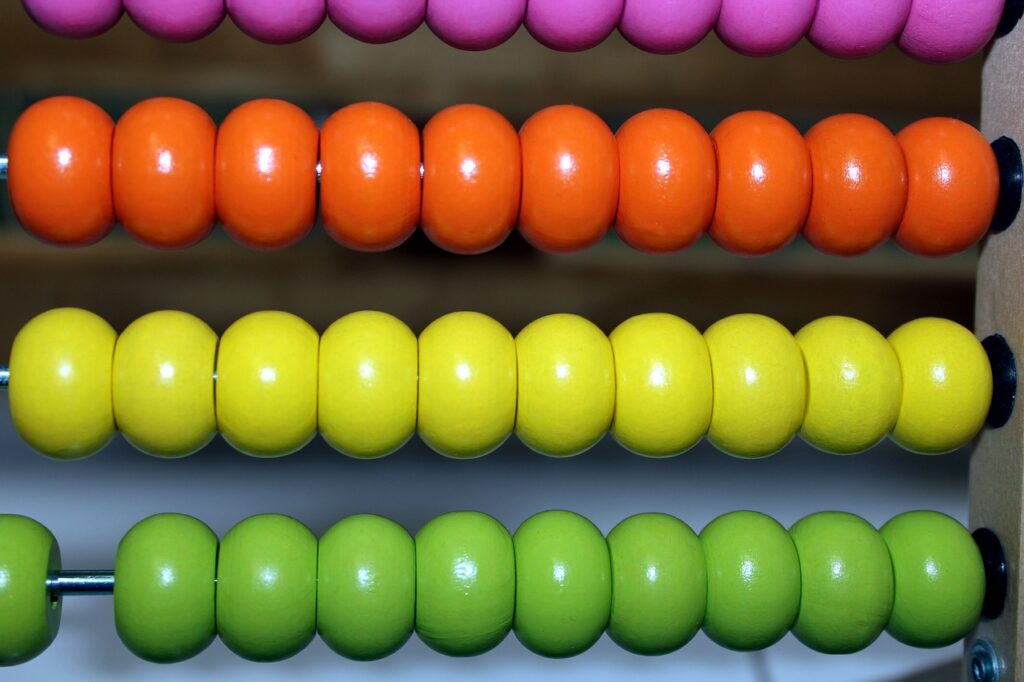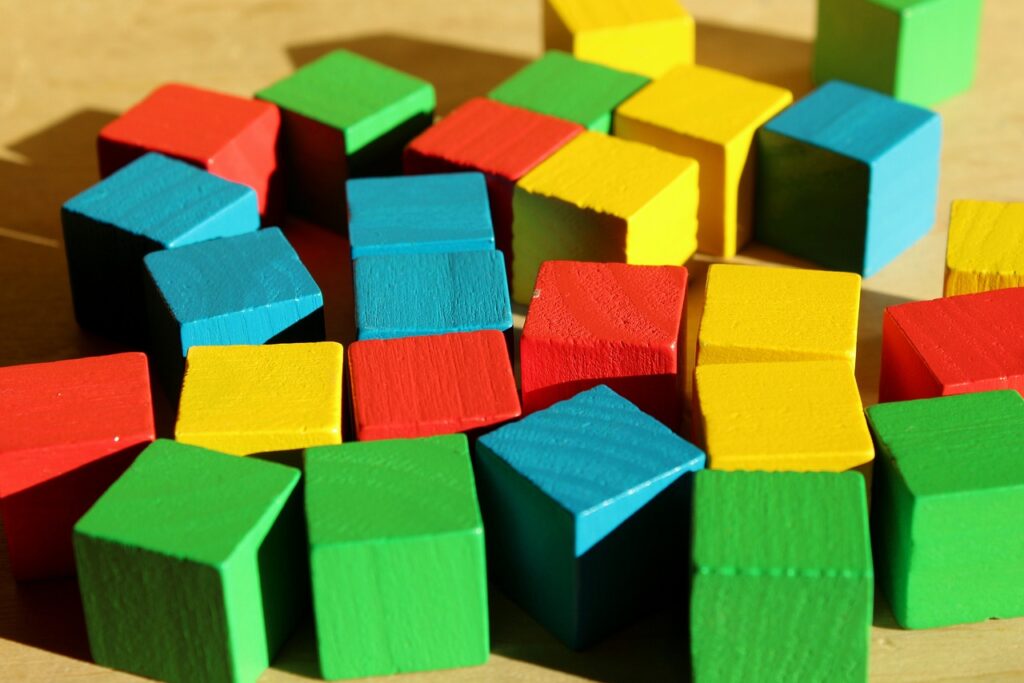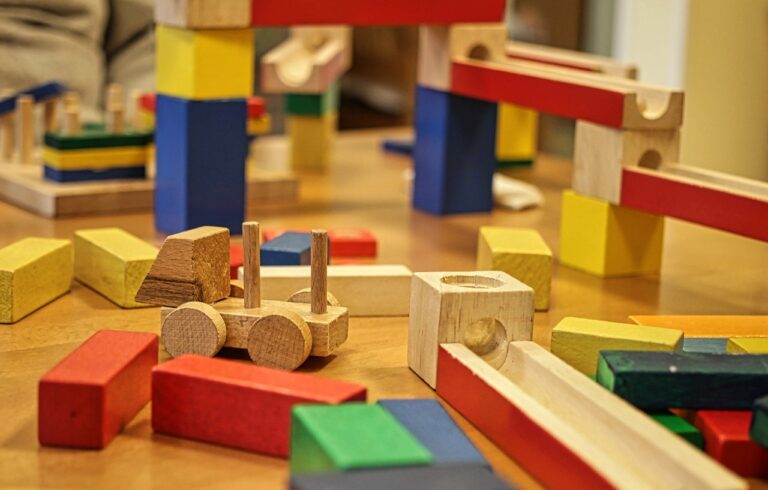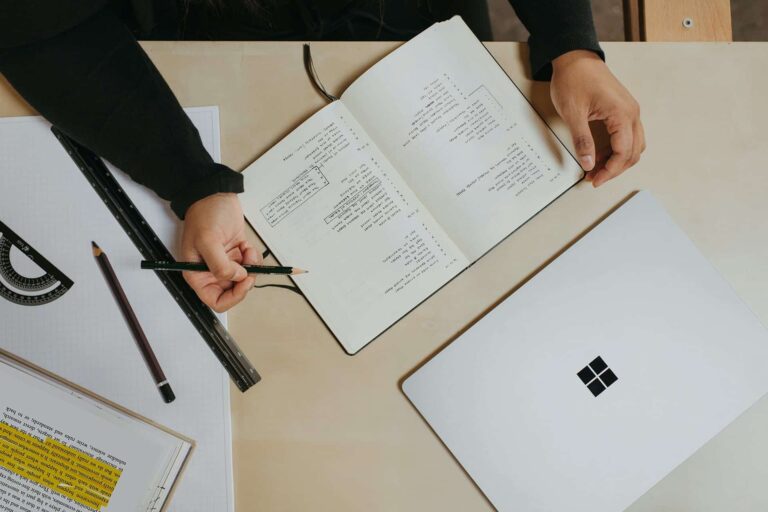Wooden Educational Toys: Learning Through Play
With their solid, tactile nature, wooden toys beckon tiny hands to explore, manipulate, and create. From the satisfying clink of building blocks coming together to the joyous challenge of fitting the right puzzle piece, these toys engage not just the senses but also the intellect. They encourage problem-solving, spatial reasoning, and critical thinking, all while fostering a sense of accomplishment that goes beyond completing a game level or earning a digital badge.
Their simplicity is their strength. Stripped of complex functionalities, these toys rely on imagination as the ultimate tool. They transform into anything a child’s mind can conceive—a spaceship hurtling through galaxies, a medieval castle under siege, or a bustling cityscape where dolls and action figures come alive.
Moreover, beyond their immediate allure, these wooden wonders boast durability that withstands the test of time. Unlike their plastic counterparts that succumb to wear and tear, wooden toys weather the years, passing from one generation to the next, carrying with them the memories of countless playtimes.
Benefits of Wooden Educational Toys
Wooden educational toys have benefits beyond mere playtime. They serve as powerful tools in shaping young minds, fostering coordination and intellectual skills, and nurturing a lifelong love for learning.
- Multi-Sensory Engagement: These toys engage multiple senses simultaneously. The tactile nature of wood provides a unique sensory experience, fostering a deeper connection with the toy. The textures, smells, and even the weight of wooden toys contribute to a more immersive play experience, stimulating various sensory pathways in the brain.
- Durable and Safe: Unlike their plastic counterparts, wooden toys are renowned for their durability. They withstand rough play and can endure generations. Moreover, they often lack the harmful chemicals found in some plastics, ensuring a safer play environment for children, especially during the crucial stages of development.
- Encouraging Creativity and Problem-Solving: Wooden toys encourage imaginative play, offering open-ended opportunities for creativity. Whether it’s building a fort with blocks, creating a story with figurines, or problem-solving through puzzles, these toys foster critical thinking and creative exploration. By allowing children to experiment and create without limitations, wooden toys nurture innovation and ingenuity.
- Supporting Cognitive Development: Through play, children naturally learn and develop cognitive skills. Wooden educational toys, such as puzzles, shape sorters, and building blocks, offer challenges that promote cognitive growth. They encourage spatial awareness, hand-eye coordination, logical thinking, and decision-making skills, laying a solid foundation for future learning.
- Sustainability and Eco-Friendliness: With growing environmental concerns, wooden toys stand out for their eco-friendly nature. They are often crafted from sustainable wood sources, promoting a sense of responsibility toward the environment. Choosing wooden toys aligns with the values of eco-conscious parents, contributing to a more sustainable future for the planet.
- Timeless Appeal and Versatility: Wooden toys possess a timeless charm that transcends trends. They are versatile, appealing to a broad age range, from infants exploring textures to older children engaging in complex construction projects. This versatility ensures that wooden toys remain relevant and engaging throughout a child’s developmental stages.
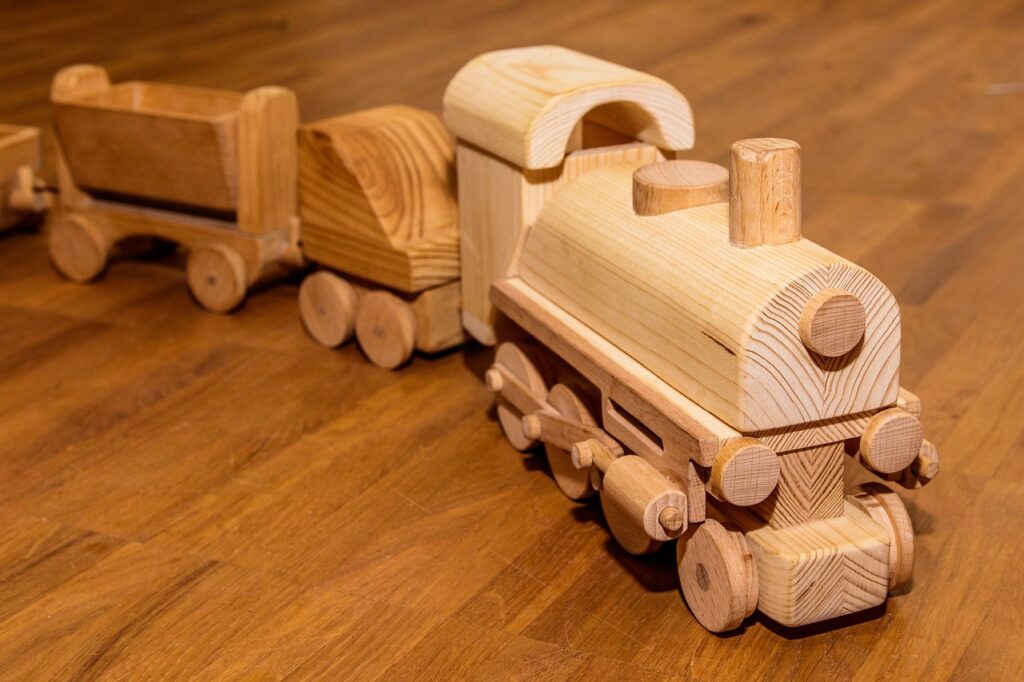
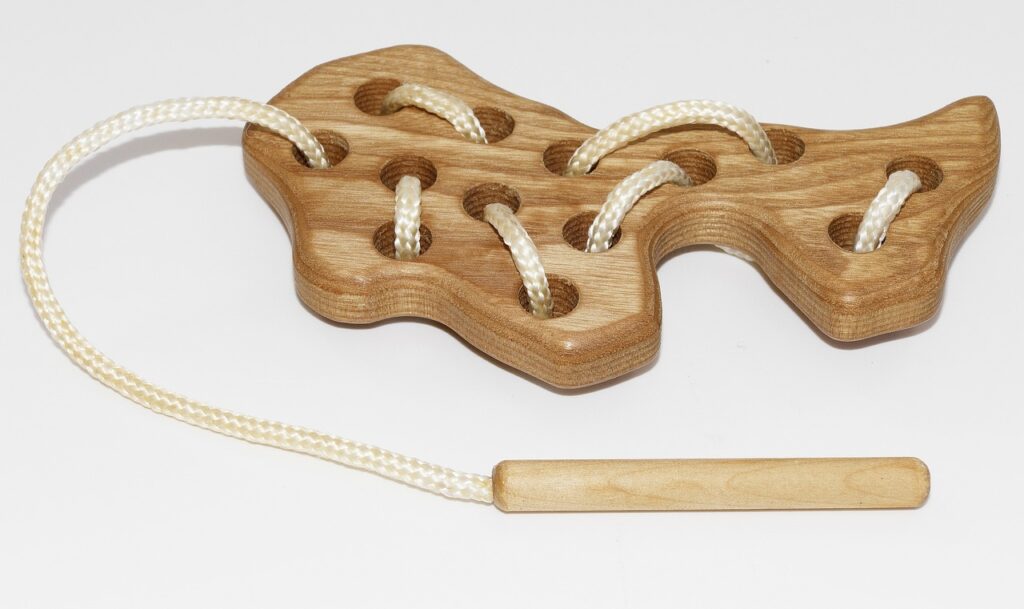
Types of Wooden Educational Toys
Wooden toys can cater to various stages of development, encouraging learning in playful and engaging ways.
- Age-Specific Toys:
- Infants (0-12 months):
- Teething Rings: Wooden rings crafted from safe materials for babies to explore and chew on.
- Grasping Toys: Simplistic wooden shapes designed for easy gripping and exploration.
- Toddlers (1-3 years):
- Stacking Rings/Blocks: Wooden rings or blocks of varying sizes that aid in hand-eye coordination and fine motor skills.
- Pull-Along Toys: Wooden animals or vehicles on wheels that encourage walking and imaginative play.
- Basic Puzzles: Simple puzzles with large, easy-to-grasp wooden pieces.
- Pre-schoolers (3-5 years):
- Alphabet Blocks: Wooden blocks with letters to aid in letter recognition and early language skills.
- Number Puzzles: Wooden puzzles with numbers or counting elements for early math learning.
- Pretend Play Sets: Wooden kitchen sets, tool kits, or dollhouses fostering imaginative play.
- School-Age (5+ years):
- Science Kits: Wooden models and experiment sets for budding scientists, exploring physics, chemistry, or biology concepts.
- Complex Puzzles: Intricate puzzles challenging spatial reasoning and problem-solving skills.
- Building Sets: Detailed wooden construction kits allowing children to create elaborate structures or models.
- Focus-specific learning:
- STEM Focus:
- Magnetic Building Sets: Incorporating magnets to teach principles of attraction and repulsion.
- Engineering Kits: Wooden sets allowing kids to build simple machines or structures.
- Language Development:
- Alphabet Puzzles: Wooden puzzles with letters to aid in letter recognition and word formation.
- Story-Telling Blocks: Blocks featuring images or words for creative storytelling exercises.
- Fine Motor Skills:
- Lacing Cards: Wooden cards with holes for lacing, enhancing hand-eye coordination.
- Bead Mazes: Toys with wires and beads to improve dexterity and coordination.
- Interactive Games:
- Cooperative Board Games:
- Wooden board games: Cooperative games promoting teamwork and strategy.
- Memory Matching Sets:
- Wooden memory games: Enhancing cognitive skills through matching and recall activities.
- Group Puzzles:
- Large wooden puzzles: Encouraging social interaction and collaborative problem-solving.
Who Uses Wooden Educational Toys?
Wooden educational toys aren’t just intended for the hands of toddlers or preschoolers. Their appeal extends beyond age boundaries and resonates with various groups:
1. Parents and Caregivers: Parents are often the primary purchasers of these toys, recognizing their intrinsic value in fostering essential skills during a child’s formative years. For many, wooden educational toys are a conscious choice, opting for toys that stimulate learning, creativity, and fine motor skills while ensuring safety and durability.
2. Educators and Schools: In educational settings, these toys are instrumental tools for educators embracing play-based learning. They’re integrated into lesson plans, encouraging collaborative play and hands-on exploration. Wooden toys facilitate learning across subjects, from math manipulatives to language development tools, making them indispensable in classrooms.
3. Therapists and Child Development Specialists: Occupational therapists and child psychologists often leverage wooden educational toys in therapy sessions. These toys assist in addressing various developmental milestones and sensory integration goals, aiding children with special needs or developmental challenges
4. Older Children and Teens: While typically associated with younger kids, older children and even teens find enjoyment and learning opportunities in these toys. Advanced building sets, intricate puzzles, and STEM-focused kits challenge their problem-solving abilities and creativity, making these toys appealing across different age groups.
5. Toy Collectors and Enthusiasts: Some individuals, driven by nostalgia or appreciation for craftsmanship, collect wooden toys as cherished items. These enthusiasts value the intricacies of handcrafted wooden toys and often seek unique or vintage pieces to add to their collections.
6. Artisans and Creators: The creation of wooden educational toys isn’t limited to large-scale manufacturers. Independent artisans and craftsmen create bespoke, handcrafted toys, often offering personalized options that cater to specific preferences or developmental needs.
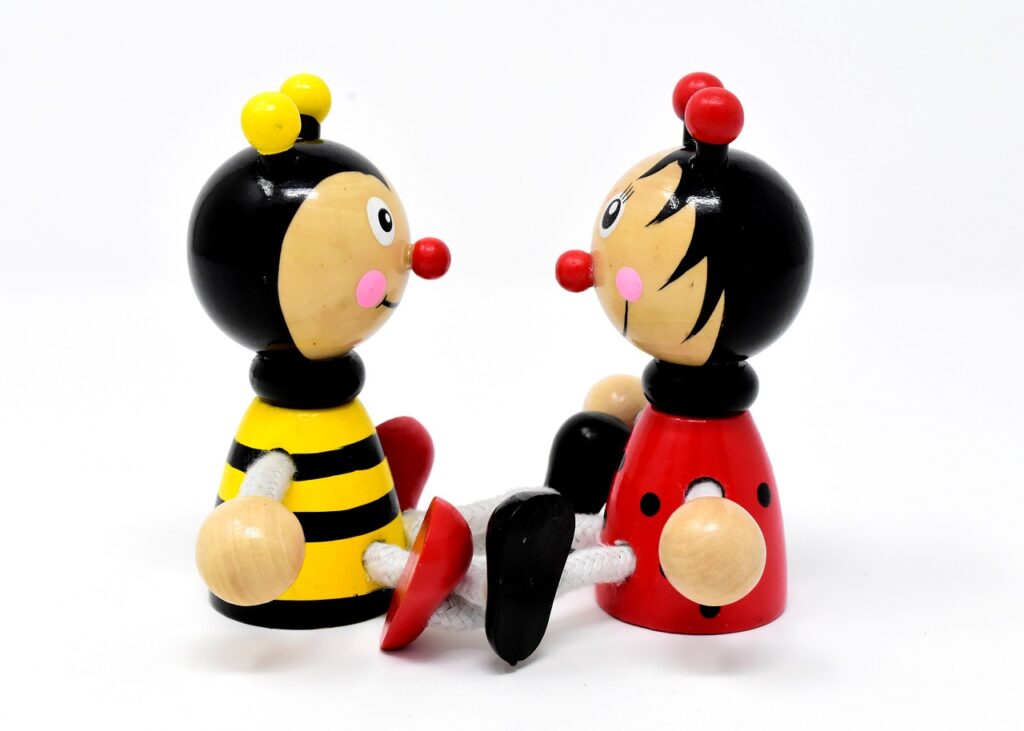
The Last Word on Wooden Educational Toys.
Wooden educational toys epitomize more than just playthings; they embody a gateway to boundless learning opportunities for children. In a digital age where screens dominate entertainment, these timeless toys stand as beacons of hands-on engagement, stimulating creativity, problem-solving, and critical thinking.
The allure of wooden toys lies not only in their simplicity but also in their ability to transcend generations. They invoke nostalgia for parents who fondly remember their own childhood adventures with similar toys. Moreover, they represent a bridge between generations, fostering shared experiences as parents pass down cherished wooden toys to their children.
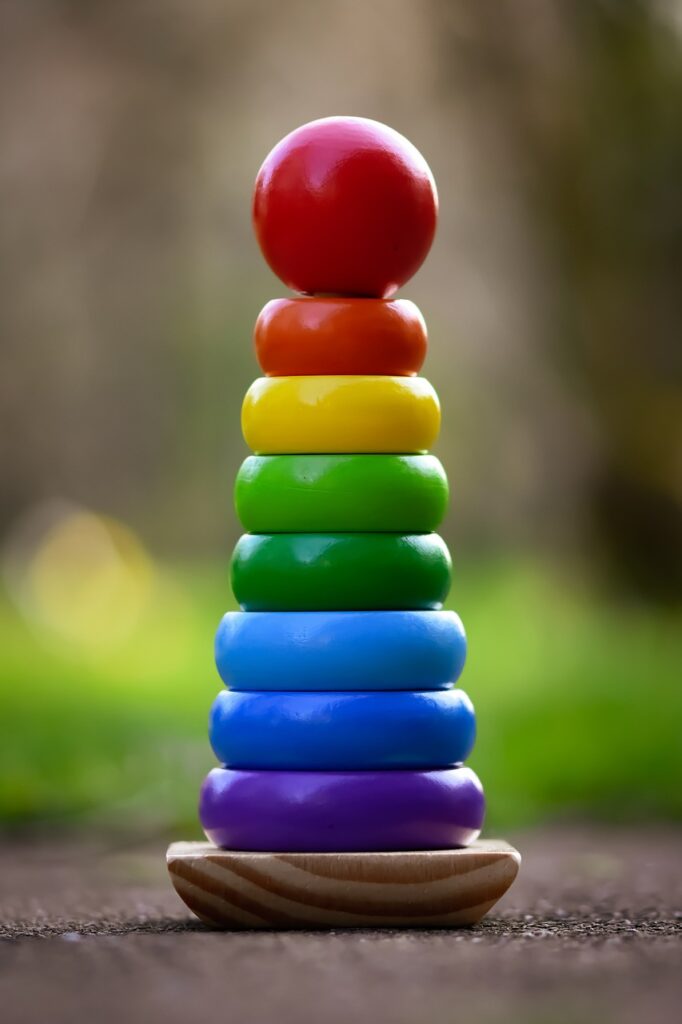
Unlike fleeting trends, the enduring appeal of wooden educational toys is rooted in their ability to adapt to evolving educational philosophies. They seamlessly align with play-based learning approaches endorsed by educators worldwide, encouraging children to explore, experiment, and learn through joyful experiences.
What makes these toys truly invaluable is their capacity to unlock a child’s imagination. From building towering structures with blocks to unraveling the intricacies of puzzles, each interaction with these toys cultivates a sense of discovery and accomplishment.
Investing in wooden educational toys isn’t just about providing playthings; it’s about nurturing a child’s holistic development. These toys aren’t confined to entertainment; they are instrumental in honing essential skills—communication, problem-solving, spatial awareness, and emotional intelligence—that lay the foundation for future success.
In a world where technological advancements often dominate the conversation around childhood, these wooden gems stand as a reminder—an ode to the simplicity and richness found in the unassuming beauty of play. They embody an age-old truth: that sometimes, the most valuable lessons are learned through the pure joy of exploration and the unfettered freedom of imagination.

